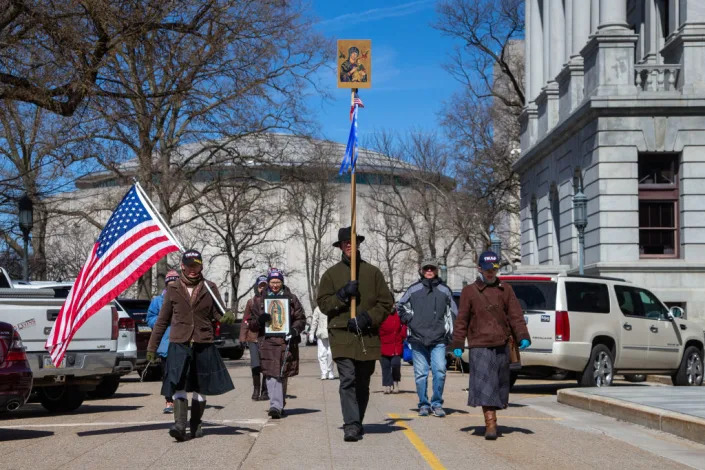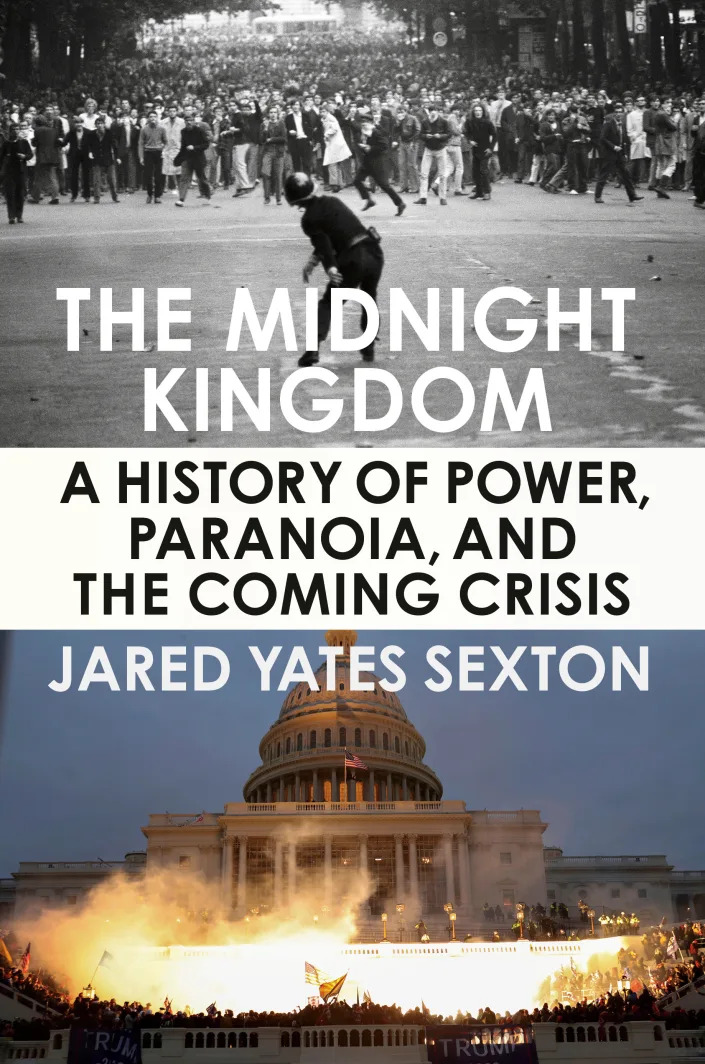Declining enrollment, empty schools, union battles: Mayoral candidates grapple with big challenges in Chicago Public Schools
Priorities included more social services, affordable housing, student-based budgeting, bilingual education, fewer standardized tests and protection of teacher pensions. “Why do we have to fight for these things?” Faraj asked. “Why don’t we already have these things in place?”
One woman, answered decisively: “Capitalism and white supremacy.”
A.D. Quig, Alice Yin, Gregory Pratt, Chicago Tribune
Sun, January 29, 2023
LONG READ
The auto shop in West Rogers Park resembled a classroom preparing for the first day of school when mayoral hopeful Brandon Johnson joined educators there recently to discuss the future of Chicago schools.
Fresh pastries on a table welcomed the crowd, nearly all Chicago Teachers Union members, and the walls were adorned with long, bright scrolls of paper for a brainstorming activity. In a corner, children played on iPads and rode bikes.
Johnson, a longtime leader with the powerful union who won its endorsement and financial backing, used the gathering to hail CTU’s work, while also referencing its battles with Mayor Lori Lightfoot and her predecessor, Rahm Emanuel.
“We really wished that the people who were sworn to support and to represent the interests of working people, that they wouldn’t have so much animus and disdain towards things as simple as a library, a librarian, social workers and counselors and housing that was affordable,” Johnson said.
While Johnson casts the union’s role as an underdog fighting for better schools, Lightfoot sees CTU’s advocacy in starker terms, accusing the union of politicizing education, wielding undue influence and playing a part in Chicago Public Schools’ enrollment loss.
Conflict with the teachers union has been a hallmark of Lightfoot’s term, starting with a bitter teachers strike months after she took office. Since then, she’s repeatedly clashed with CTU over COVID-19 restrictions, spending priorities and an elected school board, which she supported as a candidate, then balked at.
In a vivid display of the deeply held mutual acrimony, Lightfoot recently pointed a finger at Johnson during a meeting with the Tribune Editorial Board and accused the CTU of bringing “chaos” to Chicago schools.
Whoever becomes mayor for the next four years will face enormous challenges and a daunting transition from a school board selected by City Hall to one elected by voters.
As a result of action by state lawmakers in 2021, the Chicago Board of Education will become a 21-member hybrid panel in two years, with 10 members elected to four-year terms in the 2024 general election and 11 members, including the board president, appointed by the mayor. It would transition to a fully elected board by 2027.
Other issues include what to do with expensive, underused or vacant buildings, how to reverse years of enrollment decline, and ensuring stability for a system with deeply strained finances. Then there’s the matter of the union’s contract, which expires in 2024 and whose renewal risks another protracted fight.
It all could add up to one of CPS’ biggest inflection points. Daniel Anello, CEO of the advocacy group Kids First Chicago, said the next mayor will have power to steer the city in ways that can help or hurt its public schools, even with less direct control over CPS policy.
“We’ve had declining enrollment for almost 20 years and there’s no sign of it really slowing, and the root causes of it are the Black exodus, a slowing of Latinx immigration into the city, and declining birthrates. There just aren’t enough kids for the schools,” Anello said. “You have school buildings that are massive with too few students in them to fill the whole building, and yet some of those schools are functional educationally. How does the city solve that? How does the city think about changing the exodus of people leaving? And how does the city get more people to come to Chicago?”
Financial woes
As the district approved its $9.4 billion budget, leaders were urged to think ahead to when federal COVID-19 relief funds expire in 2024.
Placing added pressure: The city has started shifting costs off its books and onto CPS, a move Lightfoot adopted as a way to balance her budgets. An October report prepared for the district noted that the necessary untangling of the two entities ahead of the school board transition “creates additional uncertainties and risks, both for CPS’ operating budget and for the finances of its students and their families.”
CPS was already weighed down by a heavy debt burden. The costs now on the district’s balance sheet include $175 million for nonteacher pensions in 2022 and nearly $30 million per year for crossing guards and school police.
Every mayoral candidate has said securing more funding from Springfield would be a top priority. CPS is more than $1 billion per year below a state-set funding target based on student need. Candidates Paul Vallas, a former CEO of CPS, and Ja’Mal Green, a community activist, have called for an audit to determine how much money is being spent in the classroom.
“If the money really follows the kids to the classroom, and we know for a fact that only 60% of the money does, then we’re gonna get more social workers, we’re gonna get more mental health counselors, we’re gonna get smaller class sizes,” Vallas said at a January forum.
State Rep. Kambium “Kam” Buckner, another mayoral candidate, has said he’s uniquely positioned to get money out of state lawmakers and would shift the city’s public school funding model from being solely student enrollment-based and would install a nurse, social worker and librarian at each campus.
Most candidates have also said funding should be based on need, not enrollment.
U.S. Rep. Jesús “Chuy” García, another candidate, has called the CPS budget allocation from Springfield to be doubled. He backs another attempt to “establish a fairer tax system” in Illinois to support schools, an allusion to Gov. J.B. Pritzker’s failed 2020 graduated income tax bid.
“I truly understand how urgent it is to properly fund our schools,” García said at a recent forum. “We need to move away from our overreliance on property taxes, which is causing so much great harm, including in Chicago displacement of people who live in or near gentrifying areas. How do we do this? We can work with the General Assembly.”
Lightfoot echoed García during a recent forum, saying, “I’m not going to rest” until the state ups its contribution to CPS.
“We’ve got to get more money from Springfield, bottom line,” Lightfoot said. “Their obligation is to make sure that our public school system is fully funded, and they don’t get it. They think that the work that was done in the prior administration is good enough. It’s not.”
School closings
In September, Buckner stood before columns of boarded-up windows at the former Laura S. Ward Elementary School, which was shut during the district’s mass school closings in 2013. The West Side campus was quiet, with few cars and pedestrians passing by as he spoke from a makeshift lectern.
“Nearly a decade later, it remains vacant and closed. Nothing could be a stronger example of failed leadership, failed policy and failing our children,” Buckner said. Though he noted the schools were closed under Emanuel, Buckner said Lightfoot “let them fester” and criticized her for “an apathy-laden administration.”
Buckner pushed a bill through the legislature that placed a moratorium on school closings until 2025. The provision was meant to give officials time to work out plans for low-enrollment buildings. Buckner argued the city hasn’t taken advantage of that time to address a major challenge. Shuttering buildings is controversial, and so is choosing a replacement.
Asked how she would prepare for that deadline, Lightfoot sidestepped the question.
“I’m not going to skip ahead years from now on a process that I don’t know what the result will be,” Lightfoot said. “But what I can tell you is, we will never do anything when it comes to an individual school ... where we are not deeply engaged with the residents of those communities.”
The mayor’s answer reflects the deep sensitivities around the issue of closing schools and then reusing the buildings. The mayor once proposed using closed schools as a training ground for police officers and is working on a plan to house migrants in a South Side school, two proposals that generated fierce pushback.
Challenger Willie Wilson, a business owner, blamed crime and high taxes for enrollment decline and empty buildings, saying that reducing both would welcome back families. He’s said he would “close some of those schools down that have 10% or 25% capacity” and “sell them” or “open some up as trade schools.”
Ald. Roderick Sawyer, 6th, also on the Feb. 28 ballot for mayor, has said the district needs to make tough choices on empty schools, though he didn’t commit to closing any. Other candidates have been less open about their plans.
Elected school board
Lightfoot campaigned on an elected board but then dropped the idea, with legislators enacting the change over her objections. She has not detailed how she might engage the future board, and instead continues to argue it’s not too late to change the law to shrink the board’s size from the planned 21 members. She’s said repeatedly that number is “unwieldy.”
“I’m not giving up,” she told reporters in mid-January. “The largest elected school board is Miami-Dade and it has nine. The largest appointed school board is New York City. It has 13. This makes no sense.”
Whether reduce the board’s size is a winnable goal is another question. Aside from winning the Chicago casino in Springfield, Lightfoot has not had significant success with state legislators. She also has a famously strained relationship with Senate President Don Harmon and tensions with Pritzker.
Even though it’s well on its way to fruition, much about the elected school board remains to be sorted out, including the shape of its districts and any campaign finance limits or curbs on the influence of labor or other interest groups.
If he becomes mayor, Vallas said he would not hesitate to get involved in school board elections to support and oppose candidates.
“I’m not afraid of more democracy, and if you’re going to have an elected school board, then it’s important for the mayor to get engaged in school board elections if they want to have influence,” he said at a forum this month.
Enrollment
Pre-COVID, CPS reported more than half of district-run schools tracked for capacity were considered “underutilized.” Enrollment has declined from about 400,000 students a decade ago to just over 320,000 for this school year.
At a January forum, candidate Sophia King, the 4th Ward alderman, floated the idea of expanding Chicago’s “opportunity zones,” a term for a federal program that offers tax incentives for investors in low-income neighborhoods. It primarily operates on the city’s South and West sides.
“We have to grow the city,” King said. “And if we’re not a safe community, or have good schools, we’re not going to do that.”
She also wants to expand selective enrollment schools, install after-school programs to reengage students at every school and bring “back the trades,” she said. King is a former teacher and CPS administrator who helped launch the Ariel Community Academy in Kenwood.
“Other than safety … I think education is our next top priority,” King said in response to a lightning-round question on her most important campaign issue outside of crime. “If we don’t have a safe city, and we don’t have schools that people can go to, our city is going to continue to decline.”
Vallas has one of the deepest histories in education of the mayoral candidates: He was CPS CEO during Mayor Richard M. Daley’s “turnaround” process between 1995 and 2001, when charter and selective enrollment schools began to take off. He’s argued that he left the district on solid financial footing and “never had a work stoppage.”
He’s also been superintendent of schools in Philadelphia and in Bridgeport, Connecticut, and of the state-run Recovery School District in New Orleans as the city rebuilt after Hurricane Katrina. He also worked in post-earthquake school systems in Haiti and Chile.
In recent years, Vallas has also been a consultant for the charter school industry, including the Alternative Schools Network, where his work focused on “expanding education to students who have dropped out,” according to his campaign, and with Charter School Renewal, now called the School Improvement Partnership. There, he “helped locate and find strong leaders in the education sector” for “potential jobs as principals, teachers, directors and administrators,” his campaign said.
Vallas has called for Chicago families to have “100% choice” in where they send their children to school, saying in a campaign video that the issue is “the unfinished business of the American Civil Rights Movement.”
In a guest blog post on former Tribune columnist John Kass’ website, Vallas supported providing direct funding via vouchers “for parents to use at the school of their choice. It also means empowering the community to choose local school models that best suits their needs.”
His stance has led to Johnson accusing Vallas of being the “privatizer-in-chief” and saying it was “morally bankrupt” for Vallas to speak on public education. Vallas has scoffed at that attack.
“We have children who are prisoners in their own community” because of lack of school choice, Vallas said.
Labor troubles
Under Lightfoot, Chicago schools have seen three teacher work stoppages amid disputes over the union contract and COVID reopening. Since Stacy Davis Gates was elected union president last year, the relationship between the union and city leaders has shown so signs of thawing.
While Lightfoot and the union blame each other for the conflict, Buckner recently said, “It doesn’t seem that both entities came to the table with good faith.” If elected, Buckner said he would begin negotiations over the union’s next contract almost immediately.
“I won’t do it by proxy, I won’t do it by tweet. I’ll do it myself if I have to from my kitchen table, because we have not provided any stability or any cadence that is helpful to teachers, parents and students in this district,” Buckner said.
The district could be on the verge of another strike in 2024, a point some candidates may seize on. Vallas, for instance, recently responded to criticism from Johnson by arguing that he should be called “three-strike Johnson,” in reference to recent work stoppages by the teachers’ union.
King had her own bundle of incentives for new educators like interest-free home loans.
“Teachers are leaving now faster than we can keep them,” King said at a forum. “They’re the one profession where we throw everything at their feet that we’re unable to resolve and ask them to do that. They need that incentive.”
Green said addressing teacher shortages is key to making sure students get a good education. He said he would do so by making community college free as well as offering new teachers help with the down payment and closing costs if they want to buy a home. He also has promised to expand universal prekindergarten to 3-year-olds, a costly proposition.
‘You should be very mad’
Although Johnson has a long history as a teacher union’s leader, he has yet to release a full plan for the city’s schools.
CTU has focused on broader social issues for more than a decade, and that emphasis was underscored at the recent event in West Rogers Park.
Rami Faraj, a CPS teacher and organizer with United Working Families, a group allied closely with CTU, instructed the room to divide into groups and prioritize a set of school-related issues.
From one group, priorities included more social services, affordable housing, student-based budgeting, bilingual education, fewer standardized tests and protection of teacher pensions. The demands were met with nods and snaps from others in the room, including Johnson.
“Why do we have to fight for these things?” Faraj asked. “Why don’t we already have these things in place?”
One woman, Celeste Esquivel, answered decisively: “Capitalism and white supremacy.”
Another CPS teacher, Praise Lee, followed up by blaming policies stretching back to Republican President George W. Bush’s No Child Left Behind Act placing outsize importance on testing instead of student enrichment.
“I think it’s a long history of priorities that have happened via politics, but for many reasons, right?” Lee said. “The priorities just have not been there, but we know because we’re on the ground, right? We’re doing the work.”
As the conversation progressed that evening, CPS teacher Nora Flanagan remarked, “Sorry, I’m getting really mad.”
Faraj responded, “You should be very mad.”
Johnson stood and observed. He would not go on to speak again, but when the topic returned to the election, an earlier message of his was evoked by an organizer, Isaac Krantz-Perlman, to great applause: “Who better to run for mayor than a teacher?”
























